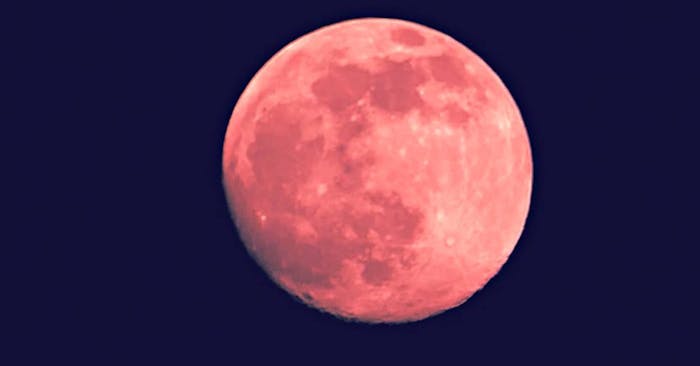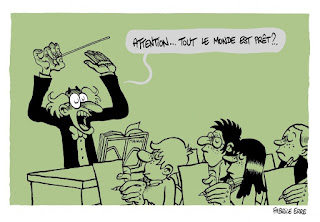June 21st was the summer solstice in the Northern Hemisphere, and if you’re feeling a little happier at the end of the week, science may explain why. The summer solstice are one of the happiest days of the year, and it’s all thanks to that sweet, sweet sunshine.
Philip Gehrman, associate director of the Behavioral Sleep Medicine Program at the University of Pennsylvania, says that people are generally more cheerful in the summertime.
Why? Light is the strongest cue when it comes to the body regulating circadian rhythms like the sleep cycle and hormonal fluctuations, more light is generally a good thing when it comes to improving your mood. I'm Sun addict for sure!
Margaux Motin
On the Summer Solstice, June’s waxing moon will reach its full lunar phase in the wee hours of June 28, kicking off a summer of celestial happenings. Stargazers are in for a treat since this full moon, known as the Strawberry Moon, also happens to arrive during Saturn opposition, meaning Saturn will be at its closest and brightest this year.
- Strawberry Moon? Why?
Yes, June Full Moon is called the Full Strawberry Moon. This Full Moon got its name from the Algonquin tribes who knew it as a signal to gather the ripening fruit of wild strawberries. This is a diverse group of tribes that covered the continent as far as California.
Algonquin couple, 18th-century watercolor by unknown artist
Courtesy of the City of Montreal Records Management & Archives, Montreal, Canada
The Strawberry Moon has different nicknames in different cultures:
- the Full Rose Moon (Europe)
- the Honey Moon (Europe)
- the Mead Moon (Europe)
- the Green Corn Moon,
- the Planting Moon,
- Birth Moon.
NASA illustration of how different Mars can look, depending on its distance to Earth
https://www.inverse.com/
https://www.inverse.com/
Summer will offer rare opportunities for stargazers. Events such as Mars opposition in late July will bring the red planet closer to Earth than it has been in 15 years, giving anyone with a telescope the chance to see Mars’ unique features more closely than usual.
The Strawberry Moon will be the season’s first celestial event visible to stargazers, and thanks to Saturn opposition occurring on the same night, it won’t disappoint.
So wherever you happen to be, don’t miss it!
This year’s Strawberry Moon, which marks the short harvesting season for strawberries, offers an exciting event for celestial sightseers. But this year, Saturn’s opposition will be visible until September.
“It’s the most colorful of all full moons,” Daniel M. Soref, Milwaukee Public Museum’s Theater & Planetarium director, told the Milwaukee Journal Sentinel in an interview published Monday. “We always get more color in the sky when things are lower.”
One thing to note is that the moon will also appear as a minimoon, which is difficult to notice with the naked eye but means the moon is at the furthest possible position from Earth. A minimoon happens when the moon is at its furthest point from Earth (called the apogee). It will appear just a tad bit smaller in the sky.
For the two celestial events to share a set time is a rare treat for stargazers, but it’s just the first of many cosmic happenings slated for this summer.
Stonehenge
via European Heritage /before Brexit
- Traditions:
Summer solstice, also called 'midsummer' is a special day for many as it means the start of the summer. It has links to many ancient cultural practices as different cultures have celebrated it being symbolic of renewal, fertility and harvest.
Every year, hundreds of pagans and non-pagans congregate at Stonehenge to see the sun rise in the morning and welcome in the summer. Stonehenge is a UNESCO World Heritage Site along with it’s neighbour Avebury. Some pagans and druids perform a fire ritual to celebrate the occasion. This involves people with unlit candles forming a circle around a large lit central candle and lighting theirs off it one at a time.
Don´t forget that 2018 is the European Year of Cultural Heritage. So, share the interesting sites of Europe where Summer solstice is celebrated.
Science
On June 27, Earth’s orbit will bring the planet in between Saturn and the sun, which will place Saturn opposite the sun in Earth’s sky and create a rare opportunity to observe the ringed planet throughout the night. Saturn will rise in the southeast sky around sunset, where it will be at its closest and brightest in 2018 before setting in the west around sunrise.
Stargazers can catch the Strawberry moon on June 27 as well, on June 28. Saturn will be at its highest in the sky around midnight, making it easy to observe alongside the moon.
While the Strawberry Moon will only hang around for one night, there will be opportunities to see Saturn and its bright opposition until September. For the two celestial events to share a set time is a rare treat for stargazers, but it’s just the first of many cosmic happenings slated for this summer.
Education:
On June 27 and 28, 2018, find the full moon and look in the moon’s glare for a starlike point. That point is a planet, Saturn.
Such an incredible event the Strawberry Moon June 28 and most European students (primary, elementary education) are enjoying summer holiday.
Only high junior schools/ lycées (secondary education) and universities exams season is happening.
So teachers can't include Summer solstice and Strawberry Moon (June 2018) into school lessons. However, students are curious, and they will pay attention on YouTube perhaps? Yes, they are the YouTubers generation
So the date of the June 2018 full moon depends on your time zone. From the most of the contiguous U.S., the moon turns full on the evening of June 27.
From Portugal and the western portions of Africa, the instant of full moon occurs before sunrise June 28.
From Portugal and the western portions of Africa, the instant of full moon occurs before sunrise June 28.
For Asia, Indonesia, Australia, New Zealand and the most of Europe, the moon turns full during the daylight hours on June 28, at which time the sun is above the horizon and the moon is below it.
After Summer holiday, teachers and students will discuss their experiences and knowledge about summer solstice and Strawberry Moon. I'm sure!
Curricula: Cross-curricular: Geography; History; Sciences; Languages (traditions, literature).
Level : All levels.
Teachers must consider the activities to every level or curriculum they are teaching.
26.06.2018
Copyright © 2018G-Souto'sBlog, gsouto-digitalteacher.blogspot.com®

Schools : Watch out ! Strawberry Moon most coloful full moon all year : resources G-Souto is licensed under a Creative Commons Attribution-NonCommercial-NoDerivatives 4.0 International License
References:
The Old Farmer's Almanac
Inverse
EarthSky

























